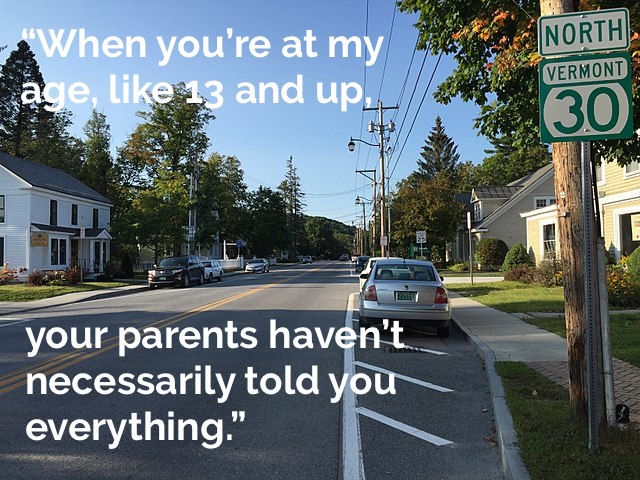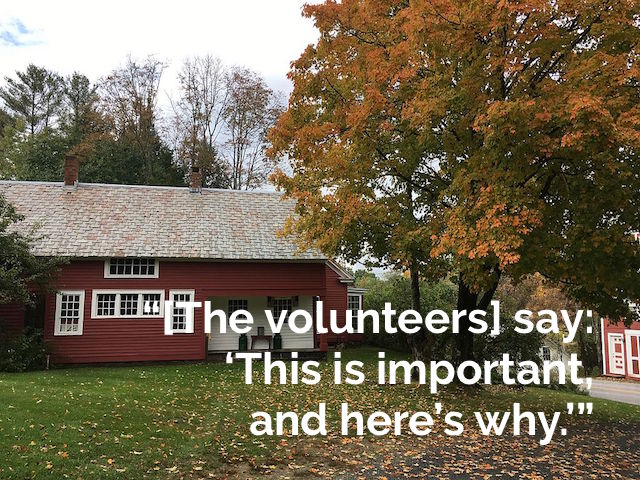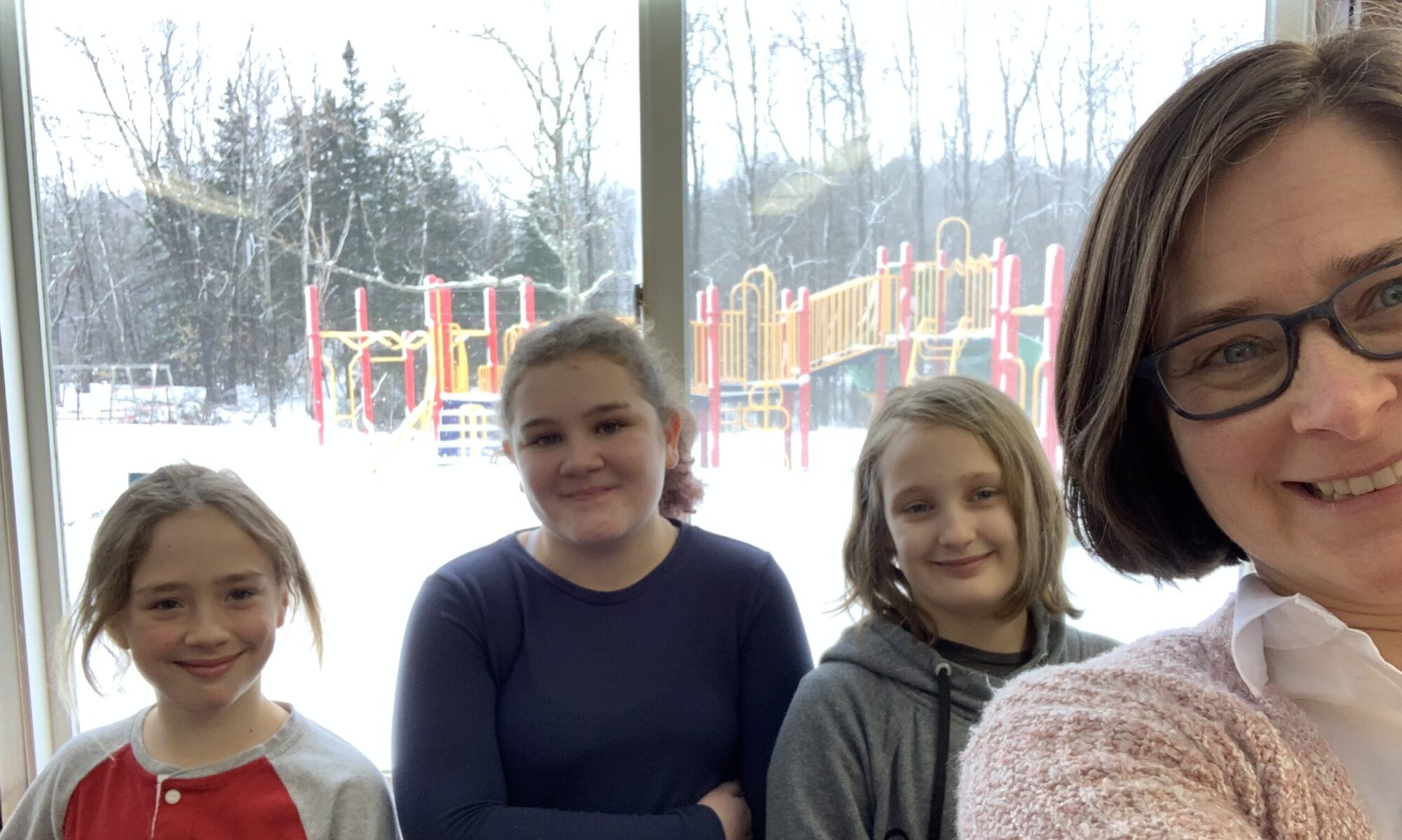It takes a village to talk about substance abuse with students
Londonderry, VT-based non-profit The Collaborative is in its 14th year of “Refuse to Use”, a substance abuse-prevention program that creates community conversations about alcohol, tobacco and drugs.
They base their curriculum off hyper-regional data and depend on community members — parents, educators and students — telling them what to talk about next.
Refuse to Use in Southern VT
A full transcript appears below.
On this episode of the 21st Century Classroom:
Rachel: What was something surprising that you learned from Refuse to Use?
Calvin: That what your parents tell you isn’t… there’s more that you need to know. When you’re at, like my age, like 13 and up, your parents haven’t necessarily told you everything.
We’ll hear about the Refuse to Use program, in which students at nine Southern Vermont schools can earn access to a local skating rink, theater festival, even a ski pass, just for attending five after-school substance abuse awareness sessions, and by pledging to remain substance-free.
But this is more than a substance abuse awareness program: it’s also a model of how schools and community organizations can partner with families in talking with students. It’s a model of how communities can start conversations with and about students and their families, with schools as the common ground.
And it can be seen as a kind of blueprint for how communities can come together to have the difficult conversations that need having, especially those involving young Vermonters.
Rachel Mark, who works here at the Tarrant Institute and co-produced this episode interviewed Southern Vermonters connected with the Refuse to Use program. Rachel has a unique perspective as a long-time educator of middle grades students. And more importantly, as the mom of a Refuse to Use participant, she attended the program’s events for parents.
Rachel: I do remember feeling like the conversations were kind of awkward, but that was a good thing. They were conversations that need to be had.

Brainchild of the Londonderry, Vermont-based non-profit The Collaborative, Refuse to Use is based off of hyper-localized regional information about substance abuse. It’s grounded in an ongoing feedback loop with community members. And by partnering with local community businesses, Refuse to Use tries to address that universal complaint heard in rural areas all over the country:
“The cry in any town from any teenager, anywhere is there’s nothing to do. So we want to provide as many things to do that do not involve alcohol and drugs as possible.”
Meet Maryann Morris.
Maryann: My name is Maryann Morris; I’m the executive director of The Collaborative. We are a youth substance use prevention organization in Londonderry, Vermont, and our work extends through Bennington County and up through Windsor County.
Maryann: The Refuse to Use program is kind of one of our gold programs and it’s a partnership with Stratton Mountain, Riley Rink and Viking Nordic Center and the Dorset Theater Festival, and nine schools in our surrounding area, middle through high school. Families volunteer to sign up. They sign a pledge to be and remain substance free for the duration of the program, which is essentially from September until April. Of course, we want them to be substance free after that, but that’s the agreement for that piece of time.
Maryann: We want to give young people enough excuses, so that when they’re out and about they can say no as frequently as possible when they’re offered drugs or alcohol. The feedback that I’m most proud of is that young people are grateful to have a reason to say no. If they’re at a party or if they’re invited to a party — “No, I can’t, I’m in the Refuse to Use program.” Because they value the pass that they get.
The majority of students who participate in the program choose a basically free ski pass to the major attraction central to all nine currently participating schools: Stratton Mountain. It’s a big deal.
Just ask Rachel’s eight grade son and Refuse to Use participant, Calvin:
Rachel: Why did you choose, Calvin, to be part of Refuse to Use?
Calvin: Mainly because of the Stratton pass, which was on wicked sale. And I wanted to have the knowledge of Refuse to Use.
At the beginning of each year, the Refuse to Use program examines the Youth Risk Behavior Survey, a data set released by the CDC, that monitors health-risk behaviors in young adolescents. The data is so fine-grained that it provides Refuse to Use organizers with a pretty vivid picture of substance abuse behaviors throughout the nine towns in which the program is active.
Maryann: When you look at the Youth Risk Behavior Survey the 30-day reported alcohol use is around 30%. But for the young people who are in our group, that’s significantly lower.
Maryann: We monitor the Youth Risk Behavior Survey to see where we need to guide our efforts. Do we need more marijuana curriculums or more marijuana events? In one community, texting and driving was a really big number and we wanted to help reduce that, so even though it’s not a substance, we decided to do some pieces about that.
Maryann: Our numbers for vaping in Bennington County specifically are really pretty high, and although tobacco use among youth is decreased and is sitting at a pretty — a reasonable level of about 7% for our community, the 30-day vaping use, it’s really high, and it’s across the board it’s become a new thing.
What’s vaping?
In case you aren’t familiar with the term, “vaping” involves filling a plastic cigarette-like holder with liquid, which is then heated to the point where it becomes a vapor. which is then inhaled. So-called “vapeable” liquids range in content from candy and fruit-flavored vegetable glycerin, to nicotine, alcohol or marijuana.
And right now, educator Micah Hare is leading a Refuse to Use session on vaping at The Dorset School, in Dorset Vermont.
Micah: My name is Micah Hare. I teach middle school Math, particularly 7th and 8th grade Math right now, at the Dorset School in Dorset, Vermont. I kind of just heard around in the hallway, that they were in need of a coordinator for the Refuse to Use Program and so I looked into it and I said, “I can do that.”
Micah: There are 20 students that signed up. I’ve got 18 that have officially completed the program, one student who has one more event to make up so 19 out of 20. That’s not bad.
Micah: Each participant must participate in five total events starting in September. They usually have a big kick-off. We’ve also done Dialogue Night which is something that they do as the fourth event and parents are invited to come. In fact, they’re required to come so that they can kind of see what the program is all about, one, and that they could communicate with their child, or other people’s children so that they’re aware as well of the different things. I know many parents who are not familiar with vaping and so things like that is informative for parents as well.
One of the most interesting things about the Refuse to Use model has nothing to do with substance abuse, and everything to do with people. Because the curriculum isn’t just based on data. It operates on a continual feedback loop from community members. People who might not have access to the Youth Behavior Risk Survey, but who see what’s going on in their communities just the same.

Maryann: We’ll take a core group of the volunteers from all of the schools and we’ll select maybe twenty different statistics that seem either really good or really wonky to us and present them to the core group of volunteers and say, “What do you guys think are important?” Because the volunteers are either parents or teachers, para-educators in the school. So where I’ll look at a statistic and say, “Alright, that’s great, but I’d rather work in this area.” They’re going to say, “This is important, and here’s why.”
One of those parents who can provide feedback on the Refuse to Use program is East Dorset resident Julie Walsh. She has two children who’ve participated in the program, and was herself a parent participant.
Julie Walsh: Julie Walsh, East Dorset, Vermont. I have one child at the Dorset School and one child at Burr and Burton Academy.
Rachel: Both of those children have participated in the Refuse to Use Program?
Julie Walsh: Yes.
Rachel: Cool. What has been your opinion of the program? What have you thought of their involvement?
Julie Walsh: I’ve really liked it. I think that it is beneficial for kids to have outside influence or information about drugs and alcohol. I think it’s great when that comes from some place other than parents. I think, when it’s in that Refuse to Use with peers, it can mean a lot more than if a parent says something.
Rachel: Okay. Do you think… I mean, this is just your own observations, but have you noticed any increase or decrease in usage in this area that has been participating in Refuse to Use?
Julie Walsh: I’ve not noticed an increase in overall population. I can say of the incidents that I’ve heard of kids either vaping or the times kids have been caught with alcohol. I have noticed that those are kids that are not involved in the Refuse to Use Program. I don’t know if that it could be just random that that how it’s come out, but I have thought that that’s interesting.
Rachel: I see. Do you think there’s any advice you could give to other parents around participating in this program?
Julie Walsh: I, personally, think it is very worthwhile. I think, just based off of my two kids, I think that they have gotten information. They don’t love going to these, but they have. I think it’s worked for them. I think that hearing some of these statistics that we wouldn’t necessarily know is beneficial. Hearing it with peers… They do definitely have peer discussions more than they would if we didn’t have this kind of program. It actually forces them to have the conversations.
Of course, the best way to find out about the Refuse to Use program is by asking one of the students participating in it. So Rachel sat down with her son, Calvin, and did exactly that.
Rachel: What was something surprising that you learned from Refuse to Use?
Calvin: That what your parents tell you isn’t… there’s more that you need to know. When you’re at, like my age, like 13 and up, your parents haven’t necessarily told you everything, like, this helps because it tells you things that you don’t know and informs you. It’s interactions, seeing what you can learn.
Rachel: Can you think of any ways the program could be improved?
Calvin: I think it could improved if they asked you what you need to learn. Like instead of them having a planned agenda, they could be like, “All right, we’re going to handout a piece of paper and if who wants to write down something they are curious about on this topic.”
Rachel: Great idea. The coordinators and facilitators would be asking the students what they thought they needed to know.
Calvin: Correct.
Rachel: Cool. Good idea. Would you participate in the program again?
Calvin: Yes.
Rachel: And why? For the free-
Calvin: The Stratton pass.
Rachel: For the free pass. And so, you must have enjoyed the program, at least okay?
Calvin: Yeah. It’s definitely worth it for anyone out there who is considering.
Would you Refuse to Use?
We all know that no one substance abuse prevention program can entirely prevent young Vermonters from experimenting with alcohol, drugs or tobacco. But Vermont’s one of many states currently reeling from the effects of opioid abuse across the population. So having students become better informed about risk and choice is the foundation for many useful conversations.
Some people wonder if using the extrinsic motivation of a ski pass is the best method of getting students to complete the program. But the numbers don’t lie: 19 out of 20 students at The Dorset School completed the Refuse to Use program. That means that 19 middle grades students in one rural Vermont school voluntarily showed up to five different events outside of school, to talk about drugs with their peers and a moderator.
And one of those events even involved their parents.
Jon Larson is the manager of the Riley Rink at Hunter’s Point. Students in the Refuse to Use program can choose a Riley Rink pass for participating in Refuse to Use. Here’s what he thinks, as an organization participating in the program and as a community member:
Jon Larson: If it’s a Friday, Saturday night, and they’re sitting around and they’re kind of bored — because you hear that a lot in Vermont, you know, it gets dark early, there’s not a lot to do and they’re just: “What are the choices?” If someone knows that they can come here, and… hang out for a couple hours and be amongst peers, it gives you an opportunity to make a healthy choice, because it’s being made available to you. That’s the first step: is to have something out there to choose. And providing that, it’s good for us, and hopefully it’s good for those kids out there that don’t have — they don’t think they have anything to do. So it’s a win-win. I’d encourage all these communities to do it. It’s good stuff. It’s good stuff.
The 21st Century Classroom is the podcast of the Tarrant Institute for Innovative Education at the University of Vermont. This episode was produced by Audrey Homan and Rachel Mark, and huge thanks go out to Maryann Morris, Micah Hare, Julie Walsh, and Calvin Mark. Our theme music, as always, is by dirtwire, and you can find out more about them at dirtwire.net.
You can find out more about the Refuse to Use program by visiting http://thecollaborative.us.
Rachel: Thank you for your time. Good job.
Calvin: Yay. What’s my pay?
Rachel: …nothing?
Calvin: What? You know, not everyone gets to have a son that’s directly coordinated with what you’re doing…
Photo of VT Route 30 by Famartin – Own work, CC BY-SA 4.0, Link.
Photo of the Custer Sharp House by Beaudoin.gouin (Own work) [CC BY-SA 4.0], via Wikimedia Commons



thanks for post.